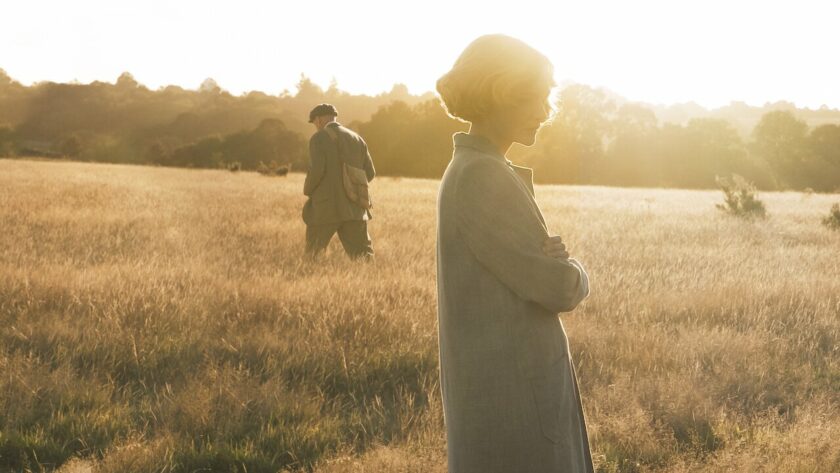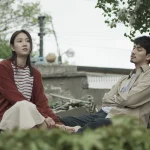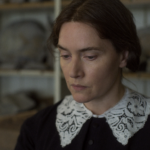Maria Cunningham takes an archaeologist’s eye to this new Netflix historical drama.
As an archaeology student, I must admit that when I heard that Netflix was making a film about the Sutton Hoo excavations, I was a little worried. The film industry doesn’t have the best track record for accurately portraying archaeology onscreen – Indiana Jones and Tomb Raider immediately spring to mind. Fortunately, upon seeing the first trailer and then watching the film, my worries were put to rest.
The Sutton Hoo excavations took place over two summers in 1938-9, which the film neatly condenses down into one, and were led by self-taught archaeologist Basil Brown (Ralph Fiennes). Brown is hired by Suffolk landowner Edith Pretty (Carey Mulligan) to excavate the large burial mounds on her estate, and begins excavation solo before he is approached by the British Museum and asked to hand over the excavation to them. The film deals with the conflict deftly and accurately, establishing the ‘villains’ of the story as the elitist British Museum, which Pretty manages to more or less fend off. This professional conflict, however, is very contained; the viewer gets a sense of the complexities surrounding academia and excavation, torn between wanting to hate the ‘villains’ due to a need for the hero/villain dynamic in films, and realising that they are working towards the same goal as the hero.

In a word, the depiction of archaeology in The Dig is ‘realistic’. In one of the earliest scenes, the burial mound collapses onto Brown due to improper precautions; the invested film viewer in me cried ‘oh no!’ whilst the archaeologist in me smiled at the accuracy. The excavation is long and difficult and the pouring Suffolk rain soaks the site, as Brown tugs tarpaulin sheets over the trenches and empties them of water. Proper trowel technique is maintained throughout the excavation scenes, and the throwaway comment about the Cambridge archaeologist Charles Phillips (Ken Scott) being too heavy to step on the hull of the ship made me chuckle. Previous films about archaeology have had a massive problem with the accuracy of excavation, preferring to ignore technique to focus on what looks good on screen, or even skipping over it entirely in favour of dramatizing and romanticizing the findings. This depiction of excavations is therefore incredibly refreshing – and no less dramatic, thanks to both the professional conflicts and the tense mood set by the constant Suffolk rain.
Whilst the plot of the film centres around the excavations themselves, they are far from the main focus of the film. World War Two is fast approaching, and the dig is constantly dogged by the ever-nearing signs of war. It begins subtly at first: RAF planes flying overhead, Brown’s assistant Rory (Johnny Flynn) preparing to join the air force, and radio broadcasts of Churchill. The tension increases as the outbreak of the war closes in – the viewers know what is going to happen, yet the characters are all living in a state of perpetual fear, resigned to whatever the outcome will be. When a RAF plane crash-lands in a nearby river, the war is literally brought to their doorstep, and reality comes crashing down for both the viewer and the characters. The blooming romance between Rory and Peggy Piggott (Lily James) is marred by the chaos of the war; it is bittersweet, as both characters know that their relationship will never last. Piggott is trapped in a sparkless marriage, and Rory has been called-up.

The emotional heart of the film is the character of Edith Pretty, who must cope with the death of her husband and the loneliness of raising her son on her own, all whilst battling the difficulties of the dig amid frequent trips to London to try and resolve her health issues. The issues she faces are often difficult to watch at times. She is constantly troubled yet trying to hold everything together for the sake of her son, and Mulligan’s heartfelt performance really gives the audience a sense of her mental strength and physical fragility. The relationship between Brown and his wife (Monica Dolan) is also central to the film, but highlights the formality of relationships in the 1930s: the two clearly love each other, but do not share much physical affection. This, too, makes the relationship between Rory and Piggott seem even more passionate, despite being doomed.
The Dig is clearly not just a film about archaeology. The film deals with life, love, loss and discovery, and whilst the stakes are not high in a global sense, it really makes you care about the characters in this self-contained story. In the grand scheme of things and outside of the archaeological world, the central plot is very minor; it is a war film, with no war. There are of course minor inaccuracies in the plot, but they pale in comparison to the overall success of the film. The Dig is not just for archaeologists, but for everyone who enjoys films; it is hard-hitting, emotional, dramatic – and most of all, real.




